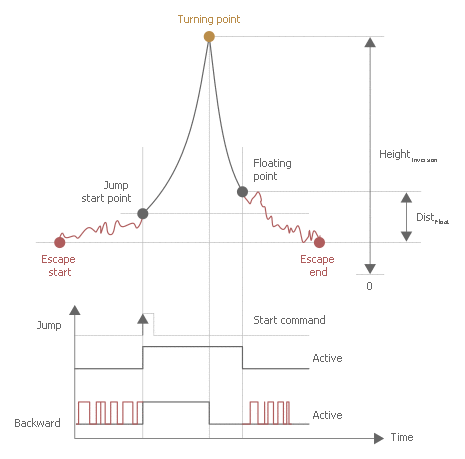Flushing functionality
When the CNC is configured for die sinking, the escape channel enables an escape motion of the electrode on a defined geometry (see section Escape channel).
The flushing function triggers a special escape motion. The rapid escape of the electrode can be commanded by the Jump control unit on the HLI if a flushing process is required. The geometry on which the electrode moves during a flushing process is identical to the geometry of an escape that is triggered over the external velocity interface.
Special features of the flushing function include the increased dynamics of the electrode motion and the fact that the distance or height of the escape motion can be commanded. When the specified distance or height is reached in the escape geometry, the electrode is returned to the starting point of the flushing process.
The floating point allows the flushing process to be terminated before the starting point is reached. When the electrode reaches this point, the system is brought to a standstill. It then switches to a normal escape state and the escape motion is controlled over the external velocity interface. It is also possible to abort the flushing process while it is in progress. The abort can be executed by two different dynamics (normal abort, emergency abort).
Special features of a flushing process
- Increased dynamics
- Specified distances and heights for the escape motion
The figure below shows an example of a command sequence for a flushing process:
- The bottom section shows a schematic diagram of the signals for backward motion active, flush active and the flush start command signal on the HLI of the escape channel over time.
- The upper section shows an example of a geometry matching the signals. Only the Z axis moves in this case. The example shows a command during an active escape motion and with premature abort of the flushing process by the floating point.

Attention

During a flushing process, the down and orbit channels must be at standstill.
Otherwise, error ID 50927 is output if there is any motion in one of the channels.